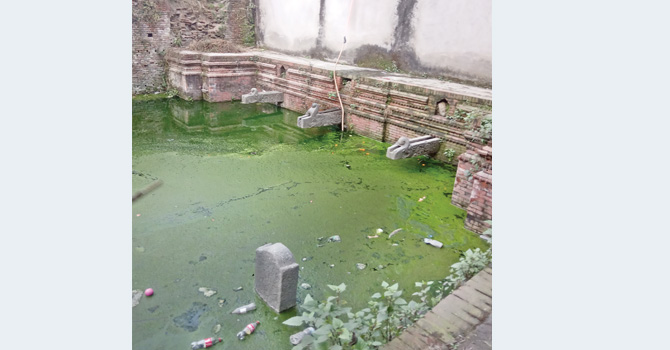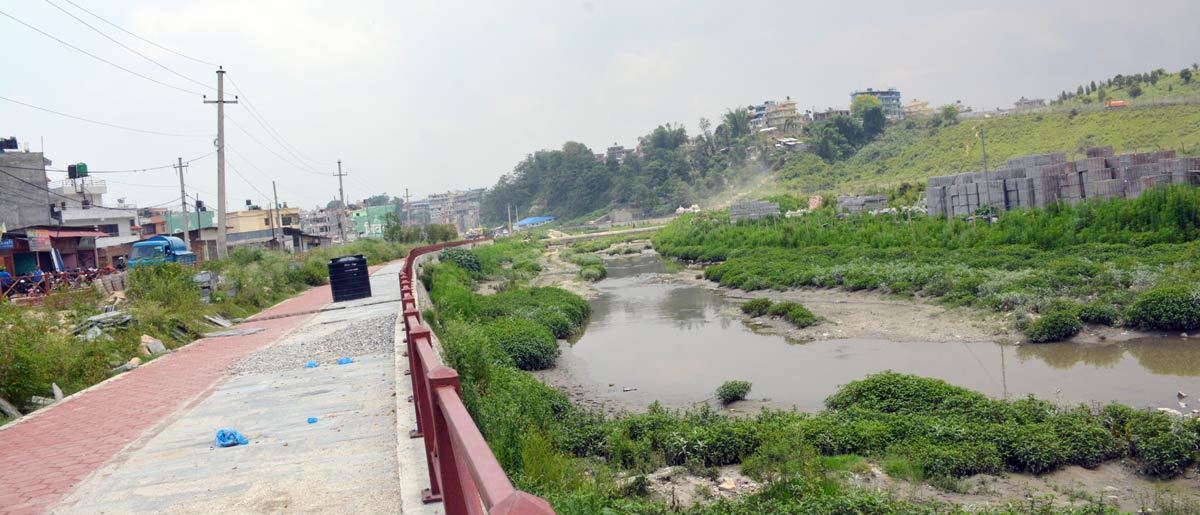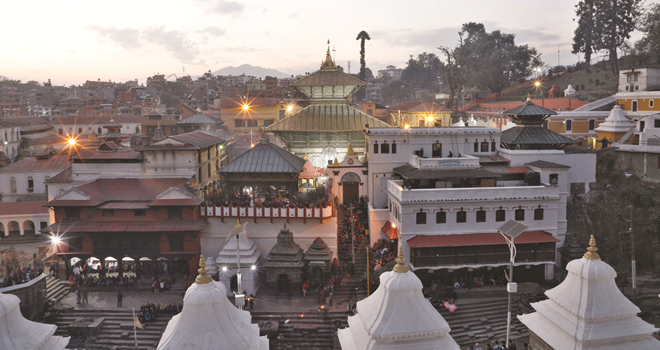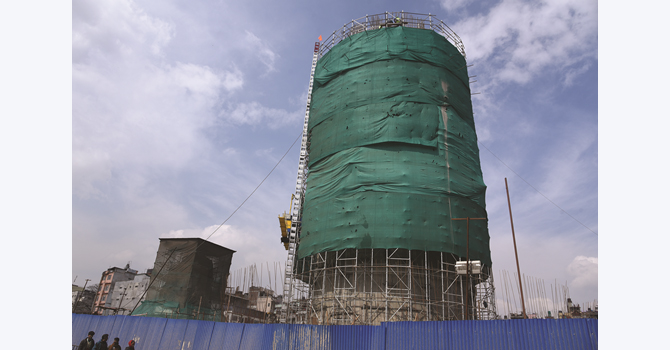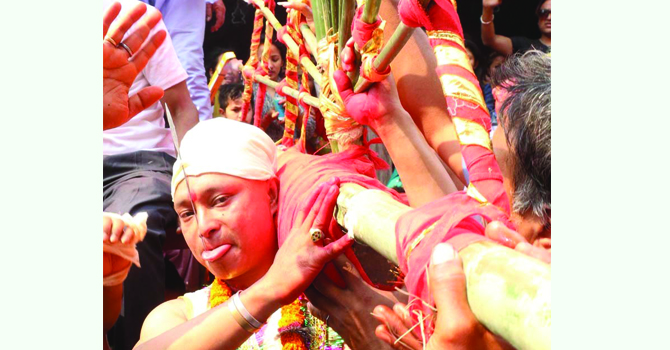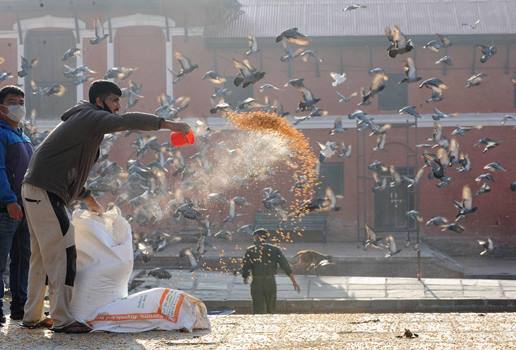Pashupati master plan draws flak
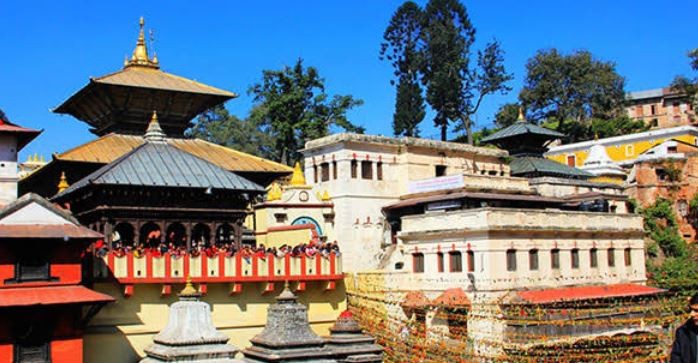
By Binu Shrestha
Kathmandu, July 31: The fourth phase master plan of the Pashupati Area Development Trust (PADT) has become a subject of controversy.
Various stakeholders, cultural experts and locals have criticised the PADT’s plan and programme stating it was brought without any consultation and discussion with them and the plan was brought destroying the antiquity of Pashupatinath, the holiest site of the nation.
The trust has submitted the proposed master plan to the Council of Ministers for approval after it was passed from the executive council of the trust in March 2020. It has reached at the table of international relation committee for discussion. The Ministry of Culture, Tourism and Civil Aviation (MoCTCA) has instructed the trust to discuss the master plan with locals after the heritage experts of the committee expressed their dissatisfaction over the proposed plan.
The issue has come to light when the trust called a discussion programme with locals and public representatives on July 19. The participants raised their voice against the trust expressing their disagreement over the proposed master plan and they boycotted the programme.
“The trust has brought this plan without consulting the locals, even the people’s representatives and experts,” said Dinesh Kumar Dangol, chief of Ward No 8 of Kathmandu Metropolitan City. “Our demand is the plan be withdrawn because it has been brought to destroy the antiquity of Pashupatinath.”
A master plan is always guided by a map with detailed description of proposed structures and planning, but the trust has developed it in an essay format like suggestion letter even though a master plan never gives suggestion. It gives detailed report of further planning and programmes, said Dr. Govinda Tandon, former member-secretary of PADT and a cultural expert.
The proposed master plan is fourth phase plan of the PADT so it should not come in proposal format, instead it needs to come in full shape with the description of map like the Lumbini Master Plan, he said.
The proposed master plan has 15 years’ implementation scheme in phases, each in five years. The first phase starts from 2077/78 BS to 2081/82 BS, the second phase from 2082/83 BS to 2086/87 BS and third phase from 2087/88 BS to 2091/92 BS.
Tandon further said that development and promotion process of Pashupati area will be in limbo for 15 years as even the third phase proposed master plan concluded in 2008/9. Pashupati area has run for around 10 years without any plan and programme in lack of a master plan.
The criticism of locals about the proposed master plan is based on lack of trust and illusion, said Ghanashyam Khatiwada, executive director of PADT. “They have not properly understood the plan and are not ready to sit for talks and listen to the experts but they are only pointing at past mistakes of the trust even though discussion is the only solution to the problems.”
“Our planning is only to expand services of Brahmanal near the electric crematorium building through a pipeline with the objective of providing holy water that flows down from the main temple for those bodies brought for cremation in the machine,” he said.
The plan has proposed to replace the existing Brahmanal near the Bhasmeshwor Ghat and bring the pipeline to the crematorium building, remove two pyres of Aryaghat to develop it Aryatirtha and demolish the eastern gate, which was built in 2016 BS violating the norms and values of archeology.
The plan has divided the Pashupati area into A, B, C and D parts for implementing the programmes according to priorities and long-term development plans. The areas are defined by the socio-religious significance, archaeological significance, physical state, topography and present and future land use, among others.
The plan has given priority to the management of the crowd of devotees expanding the core area of Pashupatinath and Guheshwori, develop Darshan (view) Path, Pashupati Area Parikrama path by covering all temples and heritage monuments, preserve the tangible and intangible heritages and manage Pashupati Museum and security system.
The area will be used for preservation, development of construction and facility, physical infrastructure forest and environment conservation, education publicity and awareness generation and study, survey and project prepetition.
Around 248 houses of different areas will be removed to pool the private land for preservation of heritage monuments, manage parking facility and expand the facility for the devotees under the master plan.
The proposed master plan has been prepared for the overall development of the nation’s holiest site for next 100 years. It has been estimated that around Rs. 33 billion will be required for the implementation of the plan, said the PADT.
Recent News

Do not make expressions casting dout on election: EC
14 Apr, 2022
CM Bhatta says may New Year 2079 BS inspire positive thinking
14 Apr, 2022
Three new cases, 44 recoveries in 24 hours
14 Apr, 2022
689 climbers of 84 teams so far acquire permits for climbing various peaks this spring season
14 Apr, 2022
How the rising cost of living crisis is impacting Nepal
14 Apr, 2022
US military confirms an interstellar meteor collided with Earth
14 Apr, 2022
Valneva Covid vaccine approved for use in UK
14 Apr, 2022
Chair Prachanda highlights need of unity among Maoist, Communist forces
14 Apr, 2022
Ranbir Kapoor and Alia Bhatt: Bollywood toasts star couple on wedding
14 Apr, 2022
President Bhandari confers decorations (Photo Feature)
14 Apr, 2022


